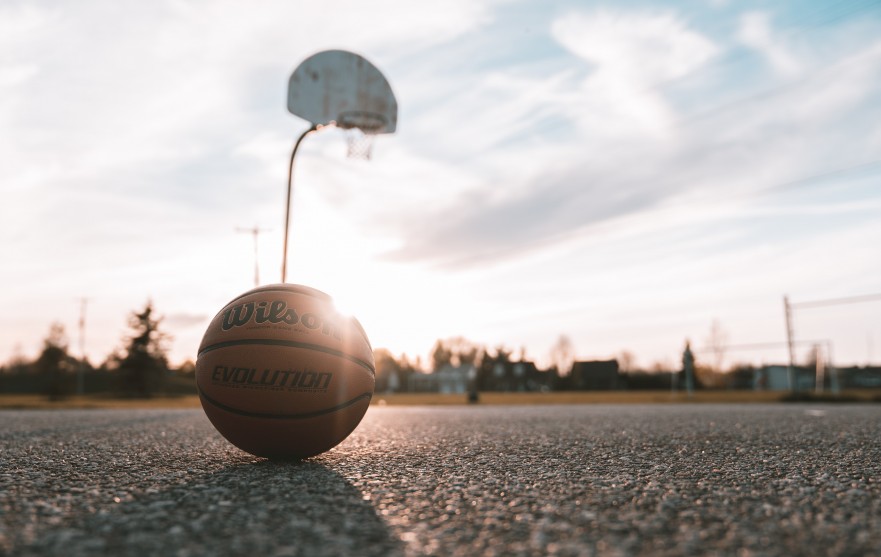Sitting in the bleachers, I watched my daughter make a mistake on the basketball court and promptly get removed from the game. As she left the court her coach met her in front of the bench and immediately began talking to her, pointing to the court, and physically modeling what she should have done. Although I couldn’t hear his words, I could tell he was being incredibly specific and detailed with his feedback. My daughter listened and nodded as he spoke. When he was finished, she sat on the bench for a few minutes before she was put back in the game to try again.
My daughter doesn’t necessarily love this kind of feedback. She is not accustomed to such immediate, direct, and public correction. At times it makes her uncomfortable. But as she plays more games, she is beginning to value the basketball knowledge she is gaining.
It’s no secret that immediate feedback produces positive results. We teachers understand the power of timely, authentic, and specific feedback to facilitate learning and achievement. We’ve witnessed the effect of true feedback compared to vague, imprecise praise. These research based tips highlight the importance of specific and immediate feedback.
This year, as we work diligently to deal with some of the academic opportunities presented by pandemic disruptions I’ve noticed teachers expertly using academic feedback to support learning. I’ve been thinking about how we can harness the power of feedback to help solve some of the other obstacles we are facing, specifically some of our behavior challenges.
I’ve heard from countless frustrated teachers regarding student behavior since returning to in-person learning. I hear about it more than the academic concerns because teachers believe the behavior is impeding academic growth and achievement.
If immediate and specific feedback works for sports and academics, why can’t it work for behavior miscues?
I decided to put this idea into practice with a specific group of students at my school. One of our middle school math blocks is struggling. Their math teacher resigned after the first quarter. While the other blocks have mostly adjusted to the substitutes, one block has not. Their behavior is not conducive to academic achievement. Unfortunately, it is also not conducive to retaining a substitute.
I could speculate why students are behaving this way, but that’s a whole other blog. I could also delve into the perplexing choice of decision makers to focus on test scores instead of re-engaging children in how to be learners. But, again, that’s yet another blog.
I needed to intervene with this group quickly before the substitute quit. In the interest of full transparency, my motivation to act quickly was self-preservation. I am an ELA expert and the thought of teaching middle school math was enough for me to try almost anything.
I thought about the coach’s feedback and the noticeable difference in my daughter’s performance. Not just in her play, but in her appreciation for basketball. Why? Because she’s getting better at it. She’s making better decisions and fewer mistakes. She’s gaining competence and confidence.
I thought about the feedback I see teachers giving their intervention groups and the difference it’s making in their academic performance. I see the students gaining confidence when they gain independence with a skill. It motivates them to keep working.
I decided to utilize the power of feedback to quickly correct inappropriate, disruptive and disrespectful behaviors in the math block.
I began pushing into that block on a daily basis. I mostly observed. I never interrupted teaching. However, the moment I saw a disruptive or disrespectful behavior, I acted immediately. I would silently tap the student on the shoulder and signal for them to step outside.
Once we were outside the classroom and away from peers I used the same script every time:
Here is what you did
Here is why that is not okay
Here is the expectation
Please repeat what you heard me say
This is what one of those conversations sounded like:
I saw you leave your seat, walk to your friend’s desk and start talking to him. This happened while your teacher was actively teaching.
This is not acceptable because you aren’t learning, you are preventing your friend from learning, and you are distracting your teacher and the other students.
The expectation is you will stay in your seat, listen to the lesson, and follow directions during instruction.
Please tell me what you understand the expectation to be.
Good, go back in and try again.
I did this each time I observed a poor behavior choice for the entire block. I used a neutral, emotion-free tone of voice. I was all business. It wasn’t about passing judgment. It was about giving immediate feedback to behavior that needed to be corrected.
At the end of the day, the students looked a little uncomfortable and slightly confused but the classroom was noticeably quieter and students were on task. Only once did I have to follow the feedback up with actual consequences due to a repeat behavior.
I went in the next day and each day after. By day 4 I only had to call one student outside the classroom for feedback. On day 5, it was down to zero.
After several days, I began to reduce the amount of time I spent in the math block until I eventually stopped going in except for short check-ins. While the improvement has been significant, they do occasionally have a relapse. When this occurs, I go back in and use the same routine. But, now they correct quickly and I only have to stay in for a short time.
I realize most teachers don’t have the luxury of an extra person to go into their classroom for the sole purpose of providing feedback for unacceptable behaviors. But, I think incorporating the strategy of immediate, specific, emotion-free feedback can help correct some of the unwanted behaviors we are currently seeing in classrooms.
Feedback works in sports. It works in academia. It’s worth trying with behavior. Let’s tell students what mistake they’re making, teach them how to correct it, and get them back in the game.
Photo by Jean-Daniel Francoeur from Pexels










Comments 1
I’ve been thinking lately about a mental health concept that as a young person experiences of disruption to their normal development – abuse, maybe or some other kind of trauma – that they have to live with, sometimes for years, their emotional development pauses. So they may end up in adulthood with the emotional age of 12 or 13. I wonder if that’s not happening. I have high school juniors who have more in common behaviorally with 9th graders.
In real time, without leaving the class, I go with the formula, “What are you doing? What should you be doing? Can you get back to that? It’s not perfect, but it does help redirect a lot of minor off-task behavior.